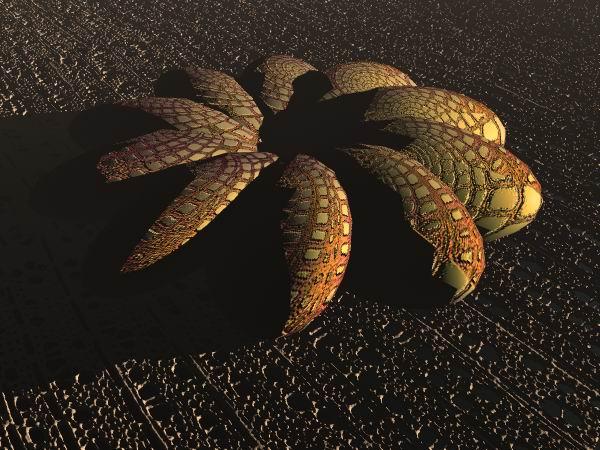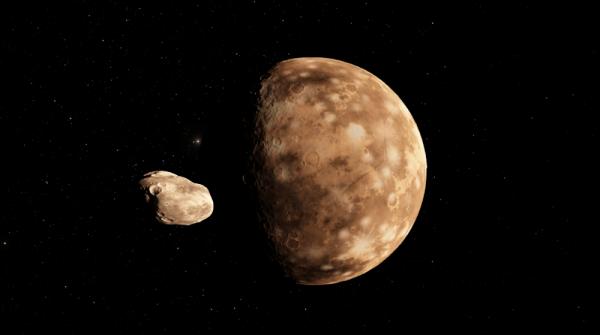BY LETTER
Neo-Helix
Galactography > Regions of Space > Inner Sphere
Galactography > Systems and Worlds > Systems & Worlds M - N
Galactography > Systems and Worlds > Systems & Worlds M - N
World with an early neogenic ecosystem | |
 Image from Anders Sandberg | |
| One of the most common artificial organisms on this world is the Thingie, a colonial auto-heterotroph found on the seashore | |
Type: K1 Ve orange dwarf
Luminosity: 0.291 x Sol
Distance from Sol: 19.47 ly (J2000 epoch)
Companion Star: 36 Ophiuchi B, K1-5 Ve orange dwarf in eccentric orbit
Semimajor axis of B's orbit around A: 88 AU
Closest approach of B to A: 6.8 AU
Colonised: 1191 AT
 Image from Steve Bowers | |
| Neo-Helix before ecopoeisis | |
The disruptive effect of the close approach of the companion star has ejected all but three planets, all small terrestrial worlds; Crick, Watson and Neo-Helix. Neo-helix has the distinction of possessing the first wholly neogenic ecosystem ever created.
Related Articles
- Ecopoiesis - Text by M. Alan Kazlev
The science and art of designing, shaping, sculpting, or modifying ecosystems.
Appears in Topics
Development Notes
Text by Todd Drashner
additional material by Steve Bowers
Initially published on 07 January 2002.
additional material by Steve Bowers
Initially published on 07 January 2002.






